How a fuel pump works
The Video Course teaches you everything about modern cars.
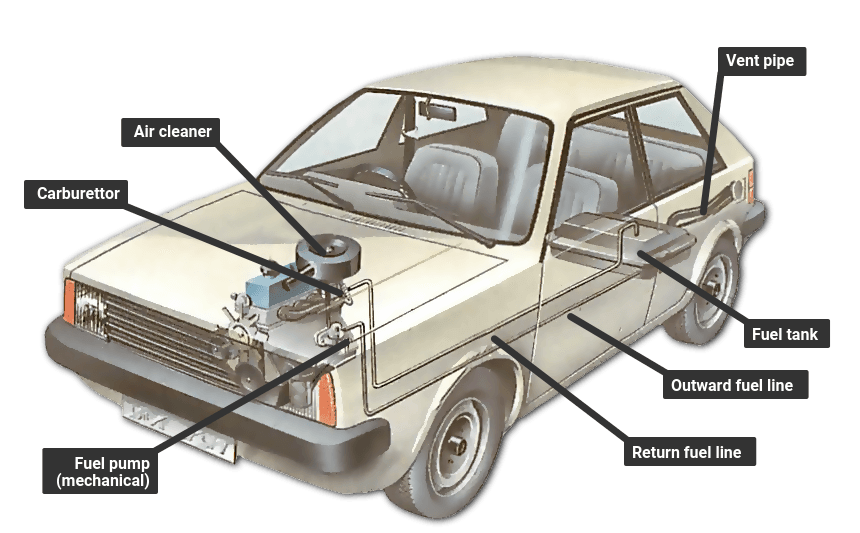
A car engine burns a mixture of petrol and air. Petrol is pumped along a pipe from the tank and mixed with air in the carburettor , from which the engine sucks in the mixture.
In the fuel-injection system, used on some engines, the petrol and air are mixed in the inlet manifold .
A fuel pump draws petrol out of the tank through a pipe to the carburettor .
The pump may be mechanical worked by the engine - or it may be electric, in which case it is usually next to or even inside the fuel tank .
Keeping the petrol tank safe
For safety, the petrol tank is placed at the opposite end of the car from the engine.
Inside the tank, a float works an electrical sender unit that transmits current to the fuel gauge, signalling how much petrol is in the tank.
The tank has an air vent - usually a pipe or a small hole in the filler cap to allow air in as the tank empties. Some of the latest systems have a carbon filter , so that fuel fumes do not escape.
How a mechanical pump works
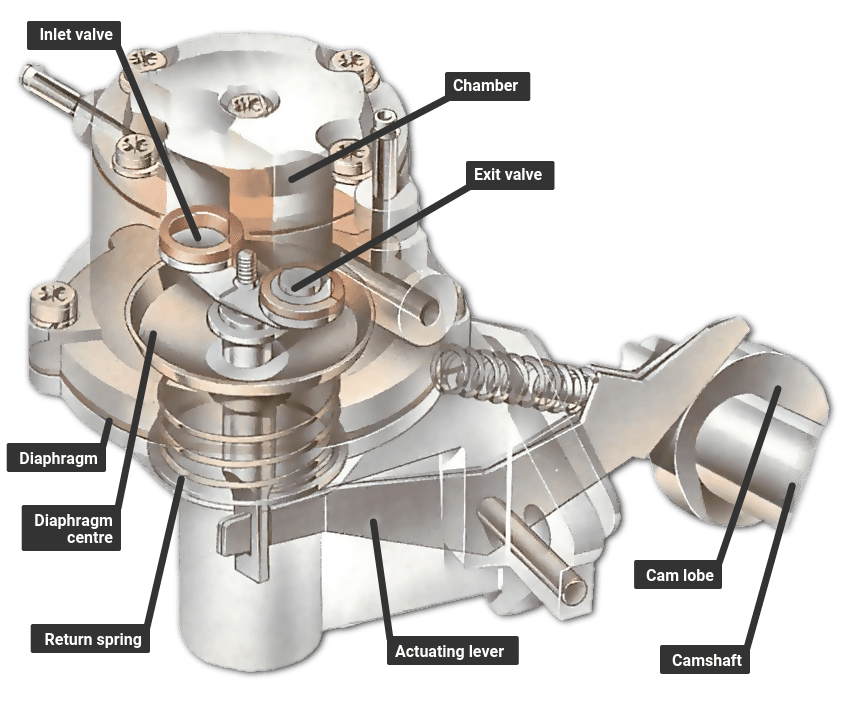
A mechanical fuel pump is driven by the camshaft , or by a special shaft driven by the crankshaft . As the shaft turns, a cam passes under a pivoted lever and forces it up at one end.
The other end of the lever, which is linked loosely to a rubber diaphragm forming the floor of a chamber in the pump, goes down and pulls the diaphragm with it.
When the lever pulls the diaphragm down, it creates suction that draws fuel along the fuel pipe into the pump through a one-way valve .
As the revolving cam turns further, so that it no longer presses on the lever, the lever is moved back by a return spring , relaxing its pull on the diaphragm.
The loosely linked lever does not push the diaphragm up, but there is a return spring that pushes against it.
The diaphragm can move up only by expelling petrol from the chamber. The petrol cannot go back through the first one-way valve, so it goes out through another one leading to the carburettor.
The carburettor admits petrol only as it needs it, through the needle valve in its float chamber (See How variable-jet carburettors work ).
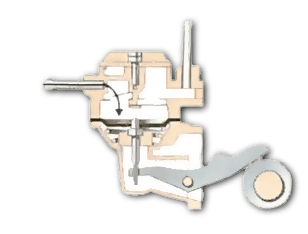
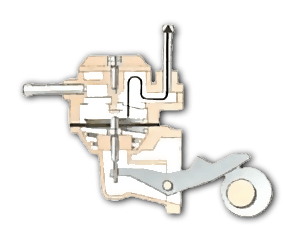
How an electric pump works
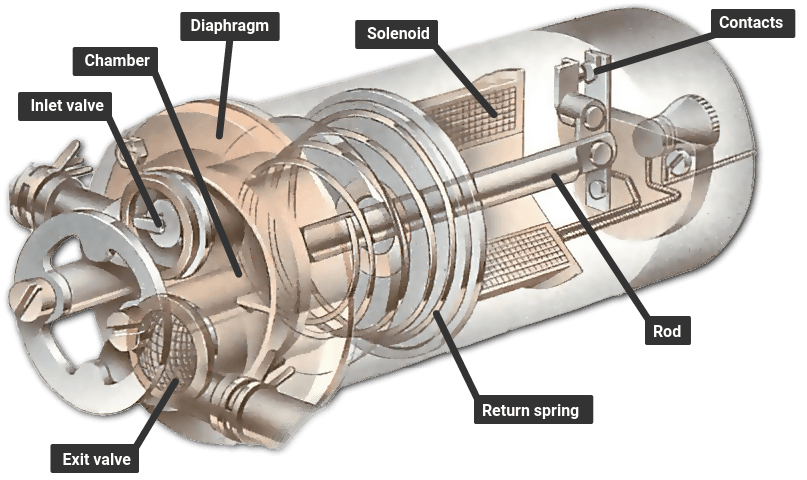
An electric pump has a similar diaphragm-and-valve arrangement, but instead of the camshaft, a solenoid (an electromagnetic switch ) provides the pull on the diaphragm.
The solenoid attracts an iron rod that pulls the diaphragm down, drawing petrol into the chamber.
At the end of its travel the iron rod forces apart a set of contacts, breaking the current to the electromagnet and relaxing the pull on the diaphragm.
When the diaphragm return spring raises the diaphragm, it also pulls the rod away from the contacts; they then close so that the solenoid pulls the rod and diaphragm down again.
Circulating petrol continuously
Most mechanical and electrical systems pump fuel only when the carburettor needs it. An alternative system has a complete circuit of pipes, from the tank to the carburettor and back again. The pump sends petrol continuously round this circuit, from which the carburettor draws petrol as it needs it.
Filtering petrol and air
Both petrol and air are filtered before passing into the carburettor.
The petrol filter may be a replaceable paper one inside a plastic housing in the fuel line . A pump may include a wire or plastic gauze filter, and sometimes a bowl to catch sediment .
The air cleaner is a box fitted over the carburettor air intake, usually containing a replaceable paper-filter element .
The Ultimate Car Mechanics video course
Learn everything about modern cars from our new video series.
Learn more >-
We build a Mazda MX5 Miata from scratch
We start by tearing down and then rebuilding the whole car.
-
Every part explained
There's ridiculous detail on every part. Clearly and easily explained.
-
All modeled in 3D
We've created the most detailed 3D model ever produced so we can show you everything working.






